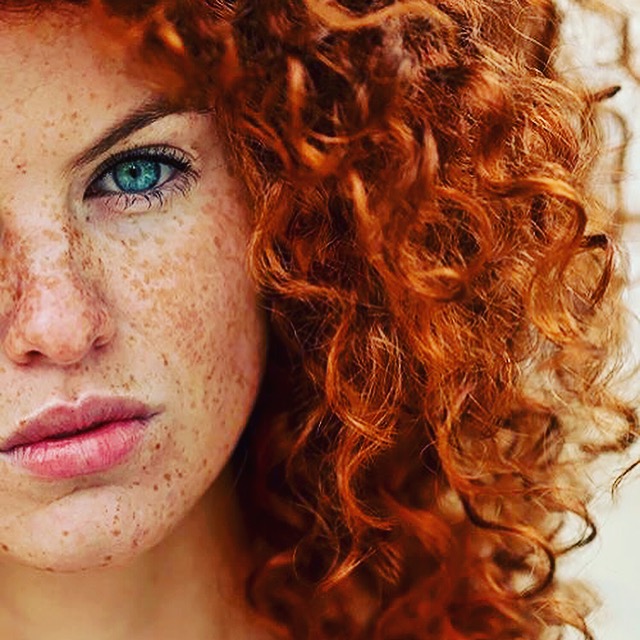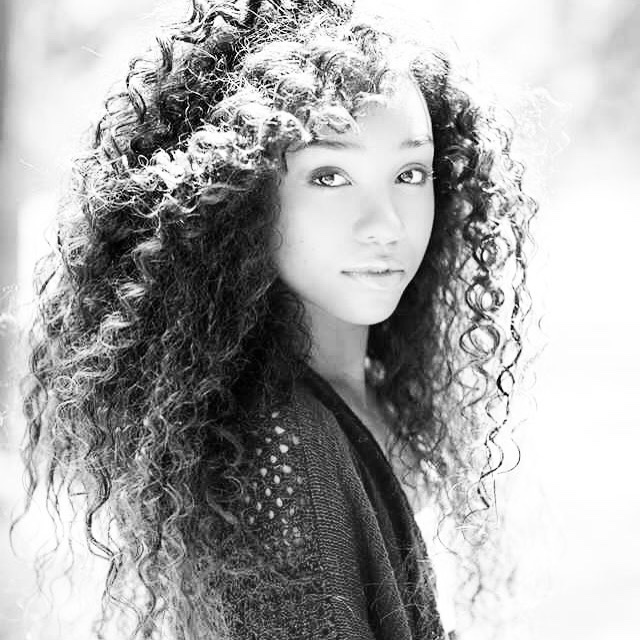Haircare, Hair Science, Styling
AFFRO CARIBBEAN HAIR
How to look after your afro
The afro, iconic in its stature and making a comeback, with its pin-up girls Solange Knowles, Lianne La Havas flying the flag for natural hair textures. Combined with festivals, including Afropunk and Curlfest, just a montage of good music and big beautiful hair, it seems that it’s time to celebrate the natural afro. But taking it back to the old afro school isn’t triumphant for all of you. Taking any chemically processed, or ‘relaxed,’ head of hair back to its afro roots can often turn out to be a steep learning curve. You see, for those of you who have been relaxing hair for years, and there are lots of you, this could be the first time you’re dealing with your natural hair texture – ever. Be warned: Afro beginners generally have to go back to basics by learning about the science of their hair, as well as the products that will now work well with their new afro texture. So here we give you the basics: the science, the lingo and the bathroom shelf essentials. We’re making the afro comeback easy for you; now that’s something to celebrate.
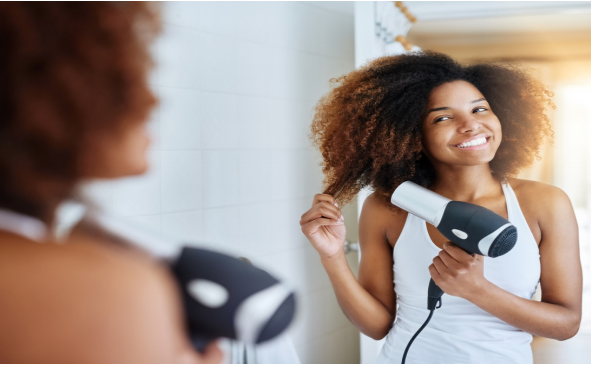
The science: Now I want to be honest, I don’t believe in the texture type chart. It’s like the paper bag theory for hair, and encourages segregation. However that being said there are different hair types and it’s a good starting point for understanding your hair.
Kinky hair: Describing hair with the circumference of a crochet needle, that is tight in its coils but still has a distinct curl pattern. Is often fragile because it has fewer cuticle layers, so less protection from brushing, heat, combing. Hair shrinkage in kinky hair can be as much as 75 and 90 per cent.
Coily hair: Tight corkscrew curls, has the circumference of the pencil or a straw. Curls can appear to be kinky and generally have multiple stands packed together to form curl pattern. Hair shrinkage in coily hair can be anything up to 60 per cent.
Curly hair: Curls are loose and spirally, in an ‘S’ pattern shape. Has a lot of body and is easy to style. Hair is soft and smooth and can take more heat than other types. Curly hair can experience shrinkage of anything up to 35 per cent.
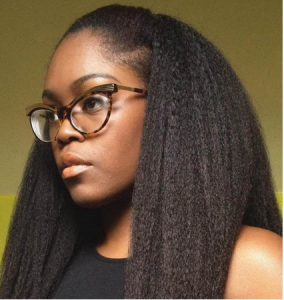 Ask the expert:
Ask the expert:
Gina, Natural Belle (with 35k followers, Gina has been a natural hair blogger since 2008 having gone back to her afro roots in 2007. Has undergone the big chop three times since going natural.)
1 “Extensions are a great way to change up your look. But I embrace my natural hair texture and use extensions and wigs to enhance that as opposed to hiding it.”
2.”I love raw ingredients like shea butter and castor oil which I get from the shea butter cottage.”
3. On styling her daughters hair; “she’s three so it doesn’t take much time styling her hair. She likes to copy me so I ensure I’m always positive about my hair so that she can embrace hers.”
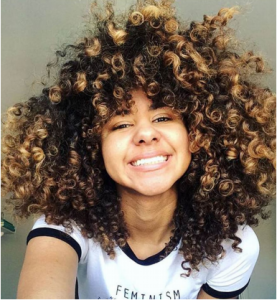 4. Hair issues? “I think it’s the same most aliments are from what you put in your body as opposed to what you put on it”
4. Hair issues? “I think it’s the same most aliments are from what you put in your body as opposed to what you put on it”
Ginny Pettitt, @frogirlginny (with 55.6k followers, 18-yearsold and with a mane of hair and wisdom far beyond her age. Natural for six years, taking the big chop at just 11- years-old. Has already created a mini empire of fro-followers, with her brighter than life personality.)
1. On products; “I am the product junkie queen but I still stick to the same products, Try the My Hair Doctor Curl Crème.”
2. For new naturals: “Do not be afraid of your new texture or curl type, love them for what they are. Do not spend too much on products, try one then if it doesn’t work give it away to people around you. Being a product junkie isn’t fun when you have wasted so much money!”
3. On the natural hair movement: “I think it is fun, but there can be a lot of negativity around it, so I’ve kind of had to distance myself and create my own world of good vibes and beautiful people. I think the movement should be celebrating our differences rather than comparing curl types. It’s a community, let us come together and be one.”
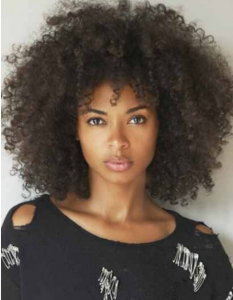 When you are new or just starting out on your natural hair journey you may not be so sure how to build your natural hair care regimen. Or perhaps you have been natural for sometime now and have come to the conclusion that its time for a change in how you care for your hair. Whatever the case may be building a regimen doesn’t have to be challenging, all it needs are the basics: Cleansing, Conditioning, Moisturizing, Detangling, and Protective and or Low Manipulation Styles.
When you are new or just starting out on your natural hair journey you may not be so sure how to build your natural hair care regimen. Or perhaps you have been natural for sometime now and have come to the conclusion that its time for a change in how you care for your hair. Whatever the case may be building a regimen doesn’t have to be challenging, all it needs are the basics: Cleansing, Conditioning, Moisturizing, Detangling, and Protective and or Low Manipulation Styles.
CLEANSING
This is the one area, where it definitely varies for everyone. Most people opt to wash every week while others wash as infrequently as once a month. There really is not one right or wrong answer when it comes to this area, its more so about what is going to work for you. Factors to consider would be the length of your hair, your lifestyle (are you active?), and your hair’s fragility. A good rule of thumb would be to wash once a week, but if you find that this is not working for you try extending the time between washes. You will know if this working for you based upon how your hair feels when you touch it and sometimes by just looking at it. If you don’t wash your hair as frequently you want to go lighter with your product usage otherwise too much product coating your hair can lead to dryness. Use a sulfate free shampoo that is not drying to the hair or many naturals co-wash (wash with conditioner) to avoid dryness.
CONDITIONING
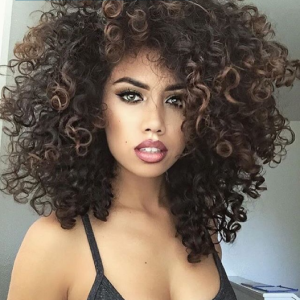 Conditioning is one of the most important aspects of a natural hair care routine. It helps restore hair’s strength and it also may contribute to moisture retention. Even if you co-wash your hair, you definitely do not want to skip out on a deep conditioning session. This is especially important for those who color-treat their natural hair or frequently use heat. Everyday just through the manipulation of your hair, your hair looses vital protein that it needs. Conditioner helps to fill in those missing gaps and can aid in alleviating breakage and dryness. Make a habit of deep conditioning at least once a month, and if you wash your hair more frequently fit in more room for deep conditioning sessions your hair will thank you for it!
Conditioning is one of the most important aspects of a natural hair care routine. It helps restore hair’s strength and it also may contribute to moisture retention. Even if you co-wash your hair, you definitely do not want to skip out on a deep conditioning session. This is especially important for those who color-treat their natural hair or frequently use heat. Everyday just through the manipulation of your hair, your hair looses vital protein that it needs. Conditioner helps to fill in those missing gaps and can aid in alleviating breakage and dryness. Make a habit of deep conditioning at least once a month, and if you wash your hair more frequently fit in more room for deep conditioning sessions your hair will thank you for it!
MOISTURIZING
Start with moisturizing your hair once a day and if you find this is too much you can always adjust this to suit your needs. When you moisturize you want to make sure that you cover all areas of your hair, but you will want to pay extra special attention to the ends of your hair. They are the oldest weakest portion of your hair and extra moisture will do it some good. A good way to avoid weighed down hair is to moisturize your hair at night, this way when you wake up in the morning your hair is moist but not weighed down. The steam from morning showers is also a nice refresher, you don’t have to let your hair get wet, the steam alone is a fine morning wake me up for your hair. On freshly washed hair try the LOC method for moisture, use a liquid based moisturizer, an oil, and then a cream to seal.
DETANGLING
Ah… detangling everyone’s favorite part of natural hair care! This is an area where you really need to be careful because if not you can end up losing a lot of hair. When you detangle you always want to have some sort of moisture in your hair, detangling on hair that is completely dry can be disastrous. Some naturals like to detangle only on wet hair, you don’t have to do this, but make sure you have a product in your hair that will give you some sort of slip. If you have 4b or 4c hair (know your hair type) that is really fine then you may want to finger comb to detangle rather than use a comb to avoid breakage. Always take your time to detangle and start from the ends of the hair and work your way up to the roots. If you find your hair forms knots rat her easily try detangling once a week.
PROTECTIVE AND LOW MANIPULATION STYLES
If you are trying to retain length and your texture is easily prone to breakage protective styles in particular are going to become your best friend. With protective styles such as twists, cornrows, or braids you don’t have to style your hair daily which helps to prevent breakage from manipulation of the hair. However, in addition to helping you retain more hair they also make life easier for you. Wearing your natural hair out all the time is a lot of maintenance on your part, while protective styles require little work. If you want something different you can always do a twist out or braid out low manipulation style. Styles such as this keep your hair controlled, styling required is minimal, and it gives you a nice change from protective styles.
WHAT IT ALL COMES DOWN TO All
naturals need cleansing, conditioning, moisturizing, detangling, and protective styling / low manipulation styles included in their regimen. What varies is the frequency of each aspect of the regimen. This is all unique to you and only you can determine how often you should do each step. For example there are many naturals on the web who wash less frequently and have retained long hair and there are some that wash more often and have grown really long hair as well. With some experimentation you will find what works best for you, as only you can determine the best approach for your hair.
